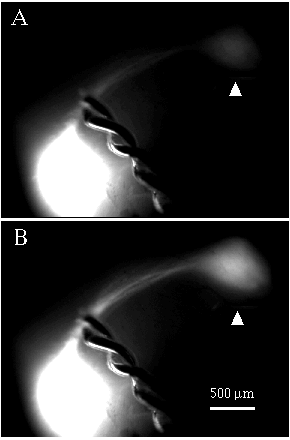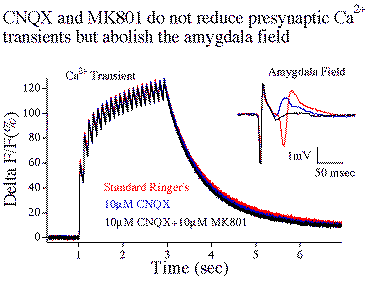
| Using a 20x water immersion lens to focus selectively on the terminals in the amygdala fluorescence transients in response to a train of 20 action potentials stimulated at a rate of 10 Hz were recorded with a photomultiplier tube. Note that the Ca transients build up rapidly and reach a plateau. Note also that the first transient is large compared to the second and subsequent transients. These observations suggest that the resting Ca is low (the terminals are healthy), that there is a large influx of Ca to each action potential and there are low amounts of dye in the terminals so normal Ca buffering properties are not strongly affected.
Addition of 10ÁM CNQX and 50 ÁM APV to block ionotropic glutamate receptors had no effect on the Ca transients indicating they are entirely presynaptic in origin.
 |